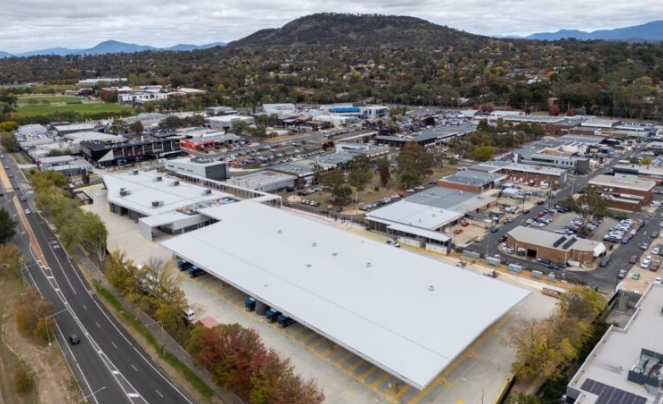While that puts the public utility for Longmont, Loveland, Estes Park and Fort Collins ahead of schedule, the last 50%, and the final 10% in particular, will be far more difficult to attain, according to Pat Connors, the vice president of Platte River Power.
Platte River Power Authority is expected to release its integrated resource plan, outlining exactly how it plans to reach this ambitious goal, in mid-2020. However, a new study commissioned by Community Energy and conducted by Christopher Clack of Vibrant Clean Energy, a Boulder-based software and services company supporting the transition to renewable energy, showed the massive undertaking could be more efficient by only requiring 90% or even 80% renewable energy and allowing natural gas to act as the nexus.
“The best way to do this is not going to 100% electric, or even trying,” said Eric Blank, co-owner and director of Community Energy. “The smart thing to do is electrify buildings and transport and go to 80% or 90% electric. Natural gas can help for the foreseeable future as coal plants retire and we build new wind, solar and storage. In the end, it will also be a critical piece of backup power when there isn’t a lot of wind and solar in the winter.”
Even after 22 megawatts of additional solar capacity is built at the Rawhide Energy Station in Wellington, along with the 225 megawatts of new wind power at the Roundhouse Wind Energy Center in southern Wyoming, Platte River Power Authority will still need to each day replace an average of 244 megawatts of power generated with coal and gas to reach 100% renewable power. That’s enough to power 195,000 homes.
To generate that amount of power with solar would require a solar array stretching 976 acres, or 1.5 square miles.
If Platte River Power Authority chose to use wind power, it would require eight more wind turbines than NextEra Energy is installing at the Roundhouse Wind Energy Center, the capital costs for which are $330 million.
While constructing these kinds of projects is plausible, Connors, the vice president of Platte River Power, said wind turbines can only reliably account for 12.5% of its total capacity due to variable weather conditions, and solar panels can only reliably account for 30% of its total capacity.
As a result, for Platte River Power Authority to ensure power for all of its customers all the time, it would need to access to either three times any many solar panels, encompassing roughly 4.5 square miles, or eight times as many wind turbines, which would cost roughly $2.6 billion.
If these facilities were built, when the system was generating power at full capacity, huge amounts of energy would be wasted due to overproduction. . And, because most solar and wind facilities are operated by private businesses that sell energy to public utilities, Platte River would still have to pay for it, causing it to increase rates for its customers.
“Overbuilding the system like that could end up being incredibly expensive,” said Steve Roalstad, a spokesman for Platte River.
While the problem could be easily solved with improved battery storage, the technology simply isn’t there yet.
As part of its new solar array at Rawhide Energy Station, Platte River Power Authority invested in some battery storage, but it can only hold 2 megawatts at a time, or enough to power 1,600 homes.
“It’s a pilot study for us,” said Chris Woods, Platte River Power Authority’s environmental compliance manager. “We’ll learn from it as we wait for the technology to improve.”
Without better battery storage,Platte River officials said they can’t just turn off the coal-fired plant and replace it with renewable sources of power.
Blank, of Community Energy, said he believes it could be done if the savings generated from retiring coal plants were used to electrify buildings and transportation.
“Electrification is really beneficial for two reasons,” Blank said. “It helps integrate even more renewable into the system because, during times when there is excess wind and solar, you don’t have to curtail it, you can use it to charge batteries and spread the fixed cost of the system over a much larger base.”
According to Community Energy’s Colorado Electrification and Decarbonization Study, if all of Colorado’s nine coal-fired power plants slowly drew down capacity until ultimately closing operations in 2040, the energy sector could save $209 million a year on operation and maintenance costs. It also would stop the emission of 331 million metric tons of carbon dioxide, roughly one-third of the state’s emissions.
The problem is that as Platte River Power Authority slowly reduces the output of its coal-fired power plants, the machinery experiences greater wear and tear.
“Coal-fired power plants like to operate at 100% capacity all the time,” Roalstad said. ““Think of it like you car on an early winter morning. There’s a lot less where and tear when you only have turn it off for an hour versus leaving it overnight.”
According to a 2019 cycling study conducted by Platte River Power Authority, ramping a plant up and down could increase maintenance costs by millions of dollars a year.
While Connors, vice president of Platte River Power, noted some of those costs would be offset by not having to purchase as much coal, Blank with Community Energy suggested the transition to renewables could be accelerated if all of Colorado’s public utilities used those savings to invest in the electrification.
If such efforts were able to successfully electrify 80% of transportation and 60% of buildings throughout the state, Community Energy’s Colorado Electrification and Decarbonization Study estimated the cumulative savings would be $4.8 billion by 2040, part of which could be invested in improving battery storage. It also would eliminate 1 billion metric tons of carbon dioxide.
In the meantime, the study suggested the baseline power once provided by the coal-fired power plants could be replaced with Rawhide Energy Station’s five natural gas turbines, which emit roughly 40% less carbon dioxide than coal.
“It doesn’t have to be this giant fight,” Blank said. “You don’t have to go to 100% renewable, you don’t need a $15 trillion green new deal, at least in Colorado, and you don’t have to build more natural gas, you just have to keep open the facilities that are already in place. One of our hopes with this study is that it could detribalize this whole debate.”







